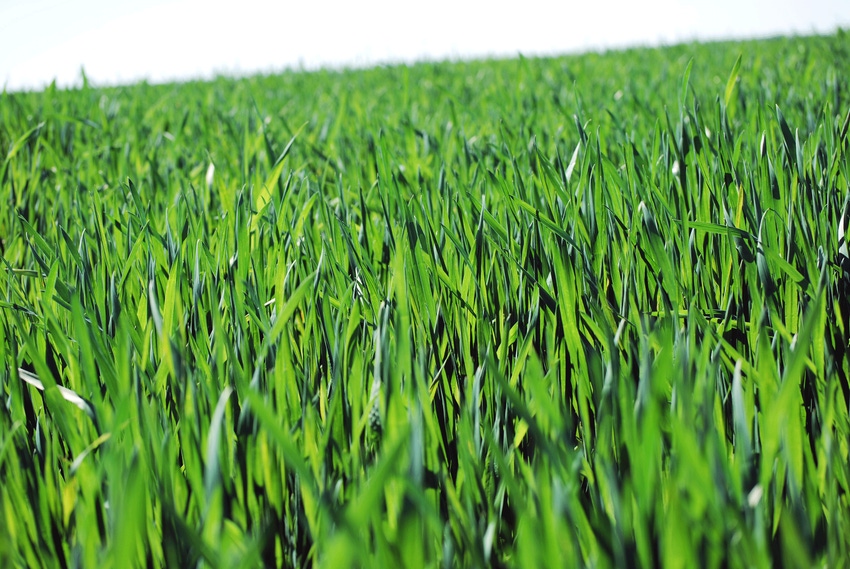August 24, 2016

There are several options when it comes to choosing cover crops. You need to know the conditions of your farm and what goals you want to achieve. Here are some details on a few popular cover crops to help you make the right choice for your farm.
1. Cereal Rye
Cereal rye is the most popular cover crop in Iowa and the one Michael Castellano, professor of soil science, Iowa State University, recommends for beginners. Cereal rye has potential to grow in almost every climate, but it grows best in cool, temperate zones. This cover crop provides farmers with flexibility to plant cover crops later in the season, while still producing significant results.
Benefits of cereal rye include:
Reduced erosion: Cereal rye provides protection on bare fields to minimizing soil loss during the off-season.
Organic matter: Cereal rye can produce up to 10,000 pounds of biomass per acre.
Weed and pest suppressor: It is very effective against small-seeded annual weeds, due to its high biomass.
2. Oats
Oats are an ideal choice for farmers in search of a low-cost, reliable cover crop. They grow the best in well-drained soil and under cool and moist conditions.
Some benefits of oats are:
Nutrient increase: When planted early, oats take up excess nitrogen and phosphorous in the soil.
Weed suppressor: Due to quick germination, oats smother weeds before they are able to spread.
Organic matter: When managed correctly, oats can produce 2,000-4,000 pounds of biomass.
3. Turnips
Turnips are a great cover-crop option for farmers who graze cattle on their fields after harvest. The relatively inexpensive crop can survive the winter, allowing cattle to eat the turnips throughout the cold months.
Benefits of turnips include:
Nutrient increase: Turnips grow very fast, which helps them scavenge high amounts of nitrogen.
Weed suppressor: The decomposing residue suppresses weeds until the spring.
4. Tillage Radish
As its name would suggest, tillage radishes thrive in no-till farming systems. The large taproot will take up soil nutrients to prevent leaching and will release the nutrients slowly back into the soil as the plant decomposes.. Be prepared: Tillage radishes need a smooth seedbed, a well-drained field and sufficient moisture for optimal growth.
Tillage radish benefits include:
Reduced erosion: Radishes are usually killed in the winter, which leaves a layer of decomposing material, providing erosion control.
Nutrient increase: With the ability to grow more than three feet deep in just 60 days, tillage radish is great for scavenging residual nitrogen.
Weed suppressor: Because it grows rapidly, tillage radishes eliminate nearly all weed growth by smothering weeds before they surface.
Soil compaction: Due to the strong, deep roots, can reduce the effects of soil compaction by penetrating different layers of the soil.
5. White Clover
When planted as a cover crop, clover performs best when used as mulch. With its tough stems and shallow roots, clover eliminates weeds much like mulch.
Clover benefits include:
Reduced erosion: White clover’s tough stems and dense, shallow root mass not only suppresses weeds but stops erosion as well.
Nutrient increase: White clover can produce high amounts of nitrogen while providing it to growing crops.
Value-added forage: Clover is digestible, allowing cattle to graze after harvest.
6. Ryegrass
For farmers not wanting to devote many resources to cover crops but still wanting to build quality soil, versatile ryegrass could be the answer. With the right amount of fertility and moisture, ryegrass has the ability to grow just about anywhere.
Ryegrass benefits include:
Reduced erosion: Ryegrass has an extensive root system and can even withstand some flooding.
Nutrient increase: It collects leftover nitrogen, reducing nitrate leaching over winter.
Weed suppressor: Ryegrass establishes roots quickly, killing early-season weeds.
Quick transition: When farmers switch to a no-till operation, it can take years for soil properties to adapt. Ryegrass has the ability to cut the transition time significantly.
7. Winter Wheat
Winter wheat is commonly grown as a cash crop; recently, doubled as a cover crop. Lower seed costs and ease of management come springtime has helped it gain popularity. Ideally, a wheat cover crop is grown in no-till or reduced-tillage systems.
Benefits of wheat include:
Reduced erosion: Winter wheat serves as a winter cover crop that has enough biomass to protect the soil.
Nutrient increase: Winter wheat gathers high amounts of nitrogen, phosphorous and potassium.
Weed suppressor: Due to its rapid growth, winter wheat helps suffocate germinating weeds.
About the Author(s)
You May Also Like




